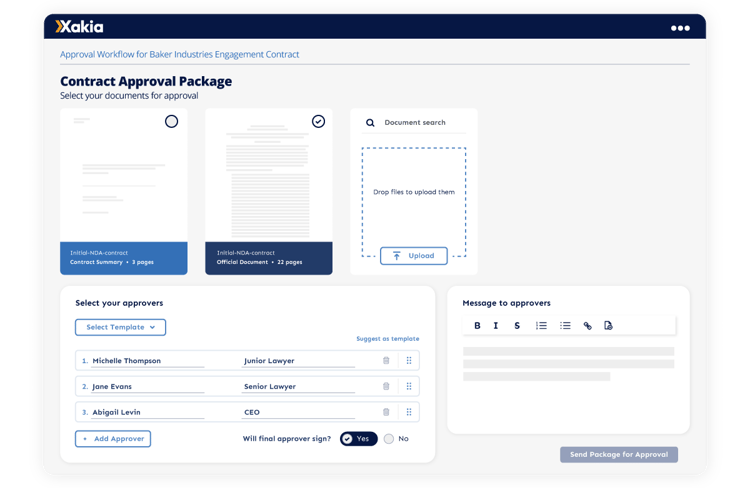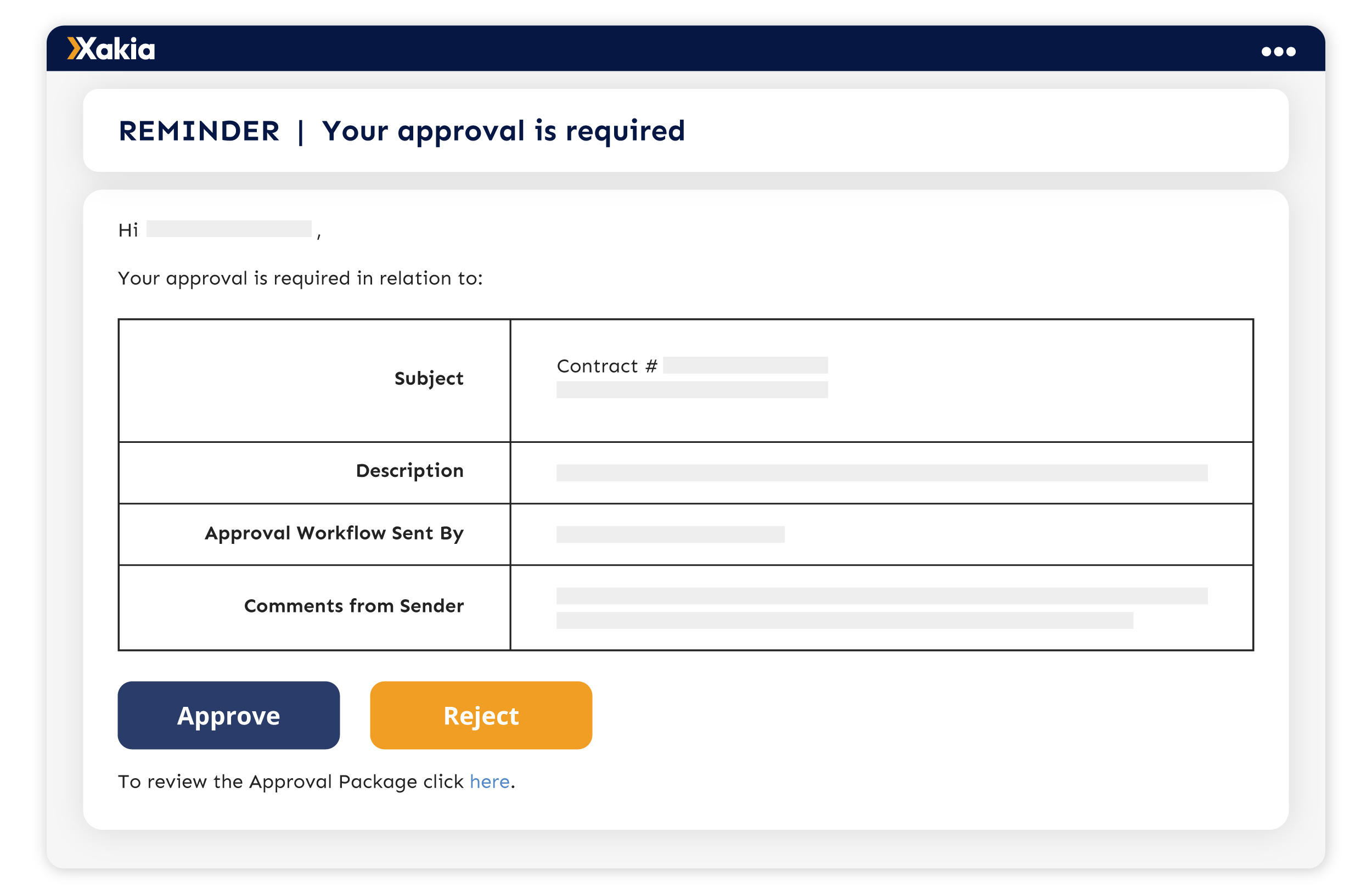Every organization has its own process for contract approval. For some, it is combined with signing; for others, a contract - and specifically contracts of a certain value or type - must pass through a series of approval steps before it can be submitted for signing. In these circumstances, approvals can be manual and cumbersome, causing delay and confusion.
To smooth and speed up the contract approval process in your organization, follow these five steps:
- Provide contract context
- Provide clarity over the approval sequence
- Surface comments from other approvers
- Make approvals easy!
- Ooze confidence in the approval workflow
This means:
1. Provide contract context
Approval should not be a rubber stamp, it must be given with full knowledge of what is being asked, why and the implications of that approval. When sending a contract for approval, it is important to provide appropriate context as part of the request to ensure that the approver(s) does not need to search for or request additional information prior to giving the approval, adding (wasted) time to the process. This should include:
- a 1-2 sentence summary of the contract
- key contract data, such as value, business unit / contract owners, execution or effective date and any other relevant milestones
- all relevant documentation, including related contracts
2. Clarity over approval sequence.
Approvers will want to know who else is in the approval chain in order to know whether they are the only person from whom approval is being sought. For example, the CEO may want to know that the General Counsel has reviewed the contract to consider specific risk issues other legal team members may be unaware of, or that the CFO has reviewed the contract to understand any financial implications. By making the chain of approvals visible, you will eliminate time wasted checking that others are included in the approval process.

3. Comments from others in the sequence.
Following clarity over approval sequence, it is important to surface comments made through the approval process by others in the sequence. A CFO wants to know that any reservations he or she has will be seen by the CEO, and likewise, the CEO wants to understand any concerns or flags the CFO raises when approving the contract. To search for this information will slow down your contract approval process. Make it easily discoverable as part of the approval process and you can avoid time delays.
4. Make it easy: put it in their inbox.
Despite the plethora of web-based applications that speed up workflow, many organizational processes still originate or reside within the corporate inbox. You can encourage your CEO and CFO to visit a web-based application, but the harsh reality is that you will slow down the process if this is not an application with which they are familiar or visit often. The answer: embed your contract approval sequences - particularly those that should be fast-tracked - in an email. Approval / rejection / comment buttons should be available to ensure the process is as speedy as possible.

5. Confidence in workflow.
Easily forgotten, but one of the biggest blockers to systemizing process, is confidence in the system itself. When your works, is secure, and predictable, your approvers will happily use it without question. Do your due diligence before you get started - test it and make sure it works, so that any hiccups are avoided and it works seamlessly every time.
Contracts can take a long time to negotiate and draft. When you get to the ‘end’ make sure that it won’t be delayed at the final hurdle. A contract approval process through your organization should provide context, clarity over the approval sequence and efficient to use.
Want to learn more about Xakia's contract approval process?
Xakia provides quick, clear approvals for your contracts, capturing the workflow in both the application and in your email. Click here for a demo, or sign up for Xakia contracts free-for-five users here.
